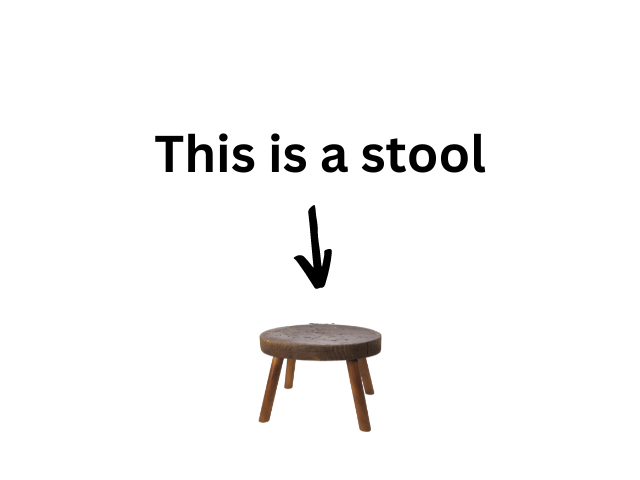11 Effective Prison Exercises for Aesthetic and Athletic Purposes

What are Prison Exercises?
In plain words, prison exercises are simple and improvised workouts that inmates perform to stay fit.
Due to the limited or non-existent access to exercise equipment, inmates who want to build muscle needed to be creative with their workouts.
How Effective are Prison Exercises?
Conventional wisdom tells us that inmates are expected to become skinnier or at least lose muscle because of the lack of exercise equipment and quality protein in their diets.
But in fact, the opposite happens, which is astonishing. Not only were they able to maintain their physique before they went to prison, but they also improved it.
Why are Prison Exercises So Effective?
Reason #1: Extremely High Reps
Because of the limited or non-existing exercise equipments, inmates will rely on performing high reps of simple exercises like the push-ups, squats, and pull-ups.
This works because your body does not know the difference between a 20kg and a 30kg weight; all it knows is the muscle tension needed to lift it.
So technically, you can still create enough metabolic stress for optimal muscle growth by relying on high reps.
Reason #2 Continuous Time Under Tension
Inmates also rely on keeping their muscles under tension for long periods when building muscle by limiting rest times and shortening the range of motion.
Reason #3 Performing Variations of an Exercise
Inmates who want to train or build their bodies for aesthetic purposes have to be creative with their exercises due to the lack of gym equipment.
One creative method they use is performing exercise variations. These are essentially the same exercises, but they’re done in slightly different ways to target specific muscles.
By performing different variations of an exercise, inmates can control which primary muscles are targeted and adjust the workout's difficulty.
An example of this would be the push-up. There are many variations of it that focus on different muscle groups and either increase or decrease intensity.
Aside from that, performing different exercise variations can also help keep the workout routine mentally engaging.
Highlights:
- Exercise variations allow you to control the intensity and primary muscle targets while keeping the essence of the exercise the same.
- Repeating the same exercise day after day can lead to boredom, but by switching up the angles, grips, or positions, inmates can keep their workouts challenging and stimulating.
Prison Exercises for the Upper Body
1. Push-Ups
In a place where gym equipment is slim to non-existent, the standard push-up and its variations are a godsend.
Demonstration of a Standard Push-up
There are many other different variations that you can do, like the wide-arm, diamond, and decline push-ups, which target different muscle groups more.
Here are a few push-up variations you can do:
- Wide-Arm Push-Ups: Spread those hands out wider than your shoulders, and you’ll feel it in your outer chest and shoulders.
- Diamond Push-Ups: Put your hands together in a diamond shape under your chest, and get ready to torch your triceps.
- Decline Push-Ups: Prop your feet up on your bed or a chair and shift the focus to your upper chest and shoulders, then start pushing.
- Plyometric Push-Ups: Adding in a clap or an explosive push cranks up the intensity, which is perfect for increasing power and speed.
- Handstand Push-Ups: If you’re feeling advanced, flip up against the wall and do push-ups from a handstand position. It’s killer on the shoulders and triceps.
These push-ups variations are many and are quite good on their own; they deserve their own blog post.

2. Sit-Ups, Crunches, and Leg raises
Sit-Ups
Short Demonstration of a Sit-Up
Sit-ups are the classic core exercise. They target your entire abdominal area, working the rectus abdominis (those "six-pack" muscles) along with the hip flexors.
They’re simple, but doing them in high reps can really challenge your endurance.
Crunches
Short Demonstration of Crunches
Crunches are like a condensed version of sit-ups. Instead of lifting your entire upper body, you just lift your shoulders off the ground, focusing the effort on your upper abs.
Since crunches isolate the abs more than sit-ups, this makes them perfect for really targeting the muscles without involving the hip flexors as much.
Plus, they’re easier on the lower back, which can be a big deal if you’re doing a lot of reps.
Leg Raises
Short Demonstration of a Leg Raise
To perform leg raises, lie flat and lift your glutes straight up to engage your lower abs; think of your legs as just adding extra weight to the exercise.
When done correctly, you should feel the tension on your lower abs area.
(You can do them with your legs fully extended or slightly bent, depending on your flexibility and strength.)
(I also suggest you push your glutes up with your toes pointing uto the sky for each rep since it will allow you to feel more tension in your lower abs.)
You can also add a twist at the end of each rep to activate your hip flexors and lower back, giving you a more comprehensive core workout.
Short Demonstration of a Leg Raise with a Twist at the End
3. Pull-ups, Chin-ups, and Muscle-ups
You need a pull-up bar to do these exercises; otherwise, you'd need to look for a bar, beam, or any sturdy horizontal surface.
Pull-ups
Short Demonstration of a Pull-up
In a pull-up, you grip the bar with your palms facing away from you (overhand grip) and pull your body up until your chin is above the bar.
They are excellent for developing upper body strength and improving overall muscle definition.
(Pull-ups also require significant core stability, so this may be considered as a full-body exercise rather than a upper body one.)
Chin-Ups
Short Demonstration of a Chin-up
To perform chin-ups, you grip the bar with your palms facing towards you (underhand grip) and pull yourself up until your chin is above the bar.
It has the same movement as the pull-up, the only difference is that you use and underhand grip to lift yourself up.
Because of the increased involvement of the biceps, people, especially beginners, might find chin-ups easier to do than pull-ups.
Muscle-ups
Short Demonstration of a Muscle-up
To perform a muscle-up, you need to pull yourself up to the bar and transition into a dip position, then push yourself above the bar in one swift motion.
A muscle-up is basically a combination of a pull-up and a dip. It's a killer exercise, and if you can do it, I highly suggest you add it to your workout regime.
4. Dips
Dips require only a stable surface that can support your body weight. This makes the exercise highly accessible regardless of the environment.
(Throughout the movement, maintain control and focus on using your chest, as your shoulders might otherwise take over and dominate the lift.)
You can do normal dips that focuses on your chest or tricep dips, which focuses more on your triceps.
Prison Exercises for the Lower Body
1. Squats, Jump Squats, and Pistol Squats
Bodyweight Squats
Short Demonstration of a bodyweight Squat
Things to keep in mind while performing a squat of any variation:
- Stand with your feet shoulder-width apart, toes slightly pointed outward.
- Keep your chest up, shoulders back, and your core engaged.
- Look straight ahead or slightly upward. (where you are facing can affect your balance)
To perform the squat, simply imagine sitting down on a very short stool.

Jump Squats
Short Demonstration of a Jumping Squat
To perform a jump squat, squat down as you normally would, but instead of standing up, explode upwards with a jump. Then, repeat the movement.
This variation of the squat adds a cardio element to the exercise and increases its intensity.
As a bonus, this exercise also trains the power output your legs can generate.
Pistol Squats
Short Demonstration of Pistol Squat
Pistol squats, also known as one-legged squats, are performed by balancing and squatting on one leg while keeping the other leg extended forward.
This advanced variation not only increases the intensity but also engages the core muscles more due to the greater balance required.
2. Lunges
Lunges are great warm-up exercises because they engage the legs and core muscles, which are the most dominant muscle groups used in sports and labor-intensive activities, with minimal to moderate intensity.
I'm going to treat these three lunges (forward, backward, and side) as the same exercise since their movements are quite similar.
Forward Lunges
Short Demonstration of a Forward Lunges
To do forward lunges:
- First, stand with your feet hip-width apart
- Second, take a large step forward with one foot
- Third, lower your body until your back knee nearly touches the floor
- Lastly, push off your front heel to return to the starting position
After doing the desired amount of reps, repeat the process on the other leg.
Alternatively, you can do a walking lunge if you have enough space.
Short Demonstration of Walking Lunges
Backward Lunges
Short Demonstration of a Reverse Lunge (Backward Lunge)
As you may have already guessed, the backward lunge or reverse lunge, is the inverse version of the forward lunge. Instead of stepping forward, you step backward instead.
I suppose one key difference between the two exercises is that you can feel more of the glutes working when doing a backward lunge, while performing the forward lunge makes you feel your quads more.
Side Lunges
Short Demonstration of a Lateral Lunge
Side lunges, also known as lateral lunges, involve stepping out to the side rather than forward or backward.
Unlike traditional lunges (forward and backward), side lunges activate your hips more intensely due to the lateral movement.
Full-Body Prison Exercises
1. Burpees
Short Demonstration of a Burpee
The burpee is the combination of a semi-squat, a push-up, and a jump. It's one of the best full-body workouts for athlethic performance to exist.
I recomend you adding this exercise to your workout routine if you have a busy schedule.
THINGS TO CONSIDER
The Environment
Routine
Prisons typically have a set and rigid routine that inmates must follow.
A set time to sleep, to wake up, to eat, and recreational time (or wokring out time). This seldom varies. Everyday the same routine over and over again.
This goes to show that a consistent life schedule may very well be the secret sauce for body transformations.
What does this mean for you?
This means that routine is an important factor to consider for your success in developing a prison physique and athleticism.
Boredom
This is still prison, there are limited things to entertain yourself. To combat boredom, many inmates turn to bodybuilding and fitness routines as a way to stay occupied and productive.
What does this mean for you?
Depriving yourself of pleasurable things (like phones, computers, enetertainment services and tools) sounds like hell, but boredom is a powerful emotion and can become a great motivator.
Removing these plasurable things from everyday life may actually help you achieve your dream physique and athleticism.
The Culture
Prison is a dangerous environment where appearing weak can make you a target. And one way to avoid looking vulnerable is to develop a strong and muscular physique.
This high-stress setting, though not good for overall health, provides a strong incentive for inmates to focus on building their bodies.
What does this mean for you?
Putting yourself in a life-or-death mindset when it comes to working out will definitely help in motivation, but it is too extreme. Instead, I suggest punishing yourself harshly/lightly when you fail to maintain or complete your workout routine. This could be by adding extra easier but time-consuming workouts or denying yourself entertainment like Netflix or playing games for the whole day or week, or any time-frame of your choosing.
Copyright ©2024, @2025 by Marshall Vulta
Last revised: April 9, 2025





Comments ()